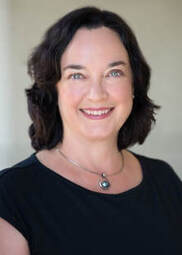 Sarah Hanawald Sarah Hanawald In their new book, The Book of Hope: A Survival Guide for Trying Times, Jane Goodall and co-author Douglas Abrams share their vision for how we can be more resilient when facing difficulty. (Abrams is also the co-author of The Book of Joy, written with the Dalai Lama and Desmond Tutu.) After listening to an interview with Abrams on a local radio station, I knew I had to get a copy. Early in the book, Abrams interviews Goodall and through a series of questions, Goodall describes hope as “a human survival trait” and adds that “without it we perish.” Later, she carefully differentiates between optimism and hope, calling optimism “a disposition” that things will work out for the best. Hope, on the other hand, requires action and agency. Thus optimism can turn to despair when circumstances take a wrong turn, but hope can be sustaining. She is also careful to differentiate between hope and idealism, which she describes as an expectation that what has happened is what was best, even if the individual didn’t want that outcome. Goodall calls that type of idealism tantamount to a delusion. The book outlines four pillars of hope: the power of human intellect, the resilience of nature, the power of youth, and the indomitable human spirit. While I’d love to dive into all of these, I’m going to focus on the second one for this post. According to Goodall, one of the essential tenets of her scientific work with endangered species and habitat destruction is that resilience is “built in” in the natural world. We, along with all living creatures, are meant to be resilient! Further, it is in our nature to foster resilience in those around us. It’s a survival tactic not just of our species, but of all species. How can we harness our instinct for resilience when we are exhausted, discouraged, and seemingly losing ground in the daily struggle? Well, it’s not via “self-care,” although that care may be key to help us find the fortitude we need to engage in the hard work of resilience. In contrast to children, adults have a unique perspective that allows them to draw on the essentials of hope. Adults have a body of experiences that provides them with an understanding that things have not always been the way they are now. Therefore, it is possible that circumstances can and will change again. For adults who care for children, this understanding positions them to guide their communities, including the young people who don’t have access to the reassurance of longitude. And, Goodall argues, hope is the addition of agency to that possibility–the idea that an individual or group can take action in order to improve circumstances that are destructive to well-being. Agency, the feeling that an individual can bring about desired changes in themselves and the world around them, is a psychological factor that many independent school educators know and understand well, from early childhood educators to college counselors. They know that helping children establish agency is key to their success in making sense of the world and their place in it. When external conditions become more uncertain, it is both more difficult and more necessary that an individual feel agency in order to thrive. Goodall recommends that those facing particularly difficult times look for opportunities for agency. I’ll add that this is a key practice for Academic Leaders; not just recognizing when authentic agency has been practiced, but reflecting upon that agency’s positive professional impact. The step of reflecting should not be overlooked! Taking the time to recognize, “I defined and implemented a system that helped several teachers meet deadlines they previously struggled with.” is resilience building, and leaders can draw on that resilience when CDC guidance changes yet again and yet another parent email about masking requirements must be crafted. Academic Leaders can support the same resilience in other campus adults through explicitly recognizing and honoring how an individual’s actions have specifically made a change for the better on campus. When the resilience of the adults at school creates an atmosphere of authentic hope, students benefit as well. Without resilient and hopeful adults in their lives, students struggle. One reason to create a culture in which students also have hope is that hope has an impact on learning. This study found that students who were more hopeful did better academically–surprisingly, hope mattered more than intelligence, personality, or even prior academic achievement. I believe Goodall is right, and resilience and hope are intertwined with agency. Academic Leaders can seize every opportunity to remind the adults and students on campus that even in these challenging times, every individual has agency in an arena. Reflection is a tool that empowers individuals to better understand their own agency and feel the confidence that results. The confidence that leads to resilience and hope that a better future is coming, because we can craft it.
0 Comments
Leave a Reply. |
Don't miss our weekly blog posts by joining our newsletter mailing list below:AuthorsBrad Rathgeber (he/him/his) Archives
July 2024
Categories |

 RSS Feed
RSS Feed